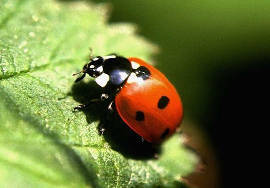How do ‘Cold-blooded’ Animals Cope in the Winter?
 Invertebrates (animals without backbones) and vertebrate fish, amphibians and reptiles, are said to be ‘cold-blooded’ because their body temperature changes with that of their surroundings. Low temperatures make it difficult for these creatures to remain active in winter – so what happens to them?
Invertebrates (animals without backbones) and vertebrate fish, amphibians and reptiles, are said to be ‘cold-blooded’ because their body temperature changes with that of their surroundings. Low temperatures make it difficult for these creatures to remain active in winter – so what happens to them?
Snakes, lizards, frogs, toads and newts slow down all their body processes almost to a stop in very cold weather. This is known as diapause and in this state the animals use up just a small amount of their store of body fat and can survive for some weeks, barely alive. They hide away in the winter under stones, logs, in compost heaps, old mouse burrows – all sorts of places where they may be safe from hungry predators.
Many invertebrates hide themselves away too. Some adult minibeasts die at the end of the summer but their eggs, larvae or pupae spend the winter hidden away, ready to continue their life-cycle when the spring arrives. Most female spiders for example, die after laying eggs in the autumn, leaving their eggs in a fluffy, whitish cocoon, tucked away under a log or in a corner of a building. Thousands of tiny spiders are released from the cocoon in the spring.
Some species of invertebrates overwinter, often as adults, in a state called torpor. They find somewhere secluded, perhaps under a log, stone or in a hole, and stay there throughout the cold months. Special chemicals are released into their body fluids to prevent them from freezing, in the way that anti-freeze works in the radiator of a car. Many caterpillars, some butterflies, slugs, snails, queen wasps and bumblebees spend the winter in this way.
Ladybirds often overwinter in colonies in thick hollow stems, amongst leaf litter, around window and door edges, under logs and many other sheltered corners such as the corner of a garden shed. Take care not to disturb sleeping ladybirds if you find them when tidying up the garden; in the spring they will wake up and begin eating aphid pests which will also have reappeared.
